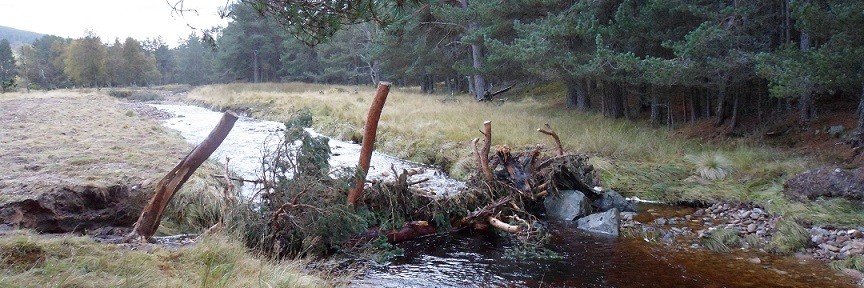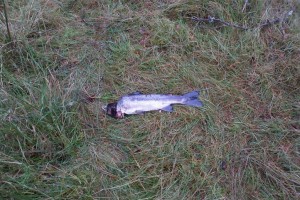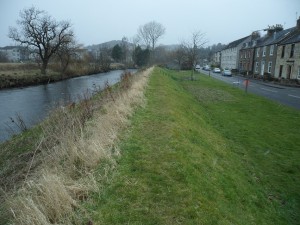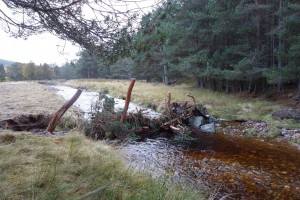
Flooding costs the Scottish Government tens of millions of pounds and destroys lives and livelihoods each year, and according to scientists, it’s only getting worse. So what can we do?
Traditionally the answer was to build up embankments to protect the towns and agricultural fields from the inundating water of rivers. However now flood frequency and size is increasing with climate change these traditional measures are now too impractical and/or costly, and areas such as Bridge of Allan (below) are now at risk of flooding.
Thankfully for us, a new method of dealing with flooding has arrived called Natural Flood Management or NFM. NFM is a set of flood management techniques that aim to work with natural processes (or nature) to manage flood risk. It particularly focusses on returning natural processes to the upper catchment that slow and store water. Many of the natural processes of the catchment were taken away in industrial era during “improvements” to increase agricultural land and productivity of estates. Such improvements included draining wetlands, building embankments, channelising the river and taking away natural riparian woodland. Not only has this reduced biodiversity and habitat corridors greatly but it has served to transfer water as quickly as possible from the uplands to the lowlands where the water levels peak rapidly and cause a tsunami like effect. As flood events and size have increased, the resulting flood water has broken through traditional urban flood defences causing economic loss.
What are NFM measures then? NFM measures can be basically split into two categories: storage measures and slowing measures. The storage measures include reconnecting the river catchment with it’s floodplain/wetlands/peatbogs to increase water storage by breaching embankments in some areas, blocking drainage channels and creating reservoirs/ponds. Whilst the slowing measures include replanting riparian tree habitat, re-meandering channelised rivers, cross-valley hedgerows and log jams. The picture below is an example of a log jam that was used by the Spey Fishery Board (SFB) on a channelised tributary of the River Dulnain called the Allt Lorgie.
The SFB put log jams in place to naturally influence the river to re-meander and take a more natural form to increase the availability of juvenile and spawning habitat for salmonids. In addition meandering rivers and log jams reduce the speed of water travelling down river, and for that reasons log jams are commonly used on NFM projects, such as The Eddleston Water Project on the Tweed Catchment. Therefore NFM measures can have multiple benefits that are catchment wide.

Spawning salmon that had been predated on probably by an Otter on the bank of the Allt Lorgie, October 2012. A good sign of ecosystem health and an indication of the multiple benefits NFM measures can have.
In conclusion, NFM measures delay and reduce the flood peak and gradually transfer water down the catchment, resulting in a reduction of flood risk by using natural processes to attenuate flooding. Therefore the best flood defences of the future will mitigate flooding by returning our river catchments to as close to their natural state and processes’ as possible.


